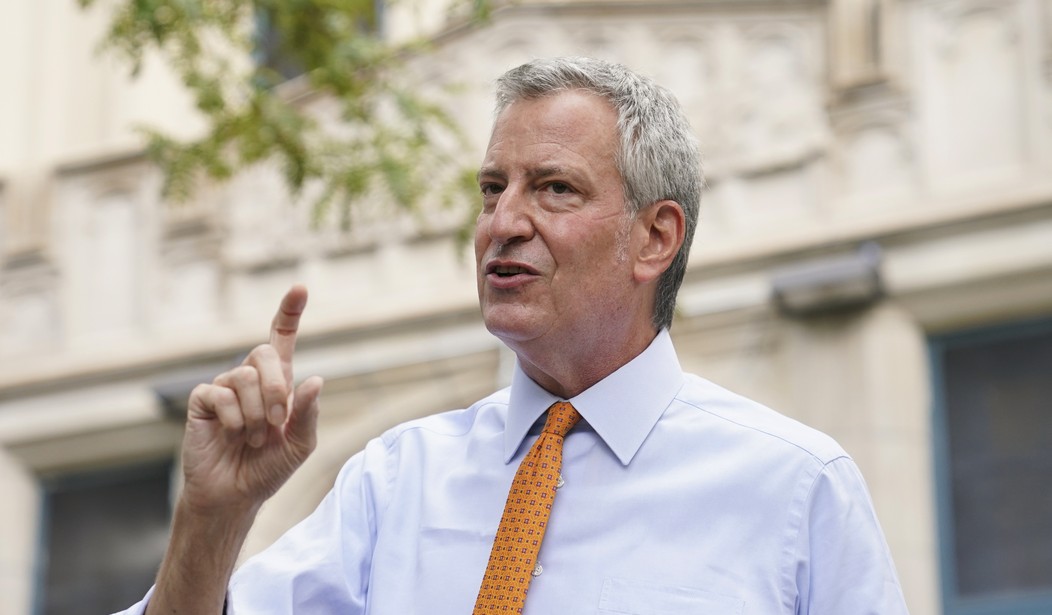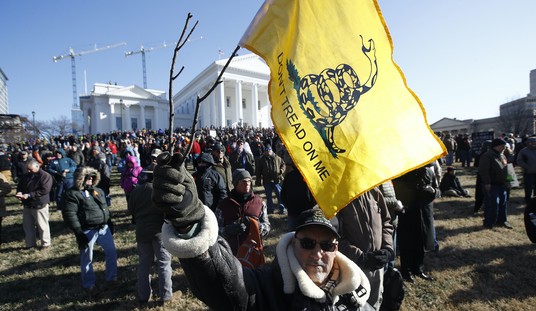New York Mayor Bill de Blasio has unveiled his “comprehensive” plan to tackle violent crime, which he says will make a “huge difference” in the fight to stem the rising tide of violence in the Big Apple. A closer look at the mayor’s strategy, however, reveals a hodgepodge of both complementary and contradictory plans that, in many cases, are likely to lead to more arrests for non-violent offenses while leaving violent criminals untouched.
Community, cops, and courts will be the three areas of focus and aims to provide increased coordination throughout all levels of the justice system, create a targeted block-by-block police presence in strategic areas, and increase community investments.
“We know what works and we’re going to put that back into action in the months ahead,” de Blasio said. “It’s a perfect time to put this plan into place.”
The mayor said the coronavirus pandemic created the “perfect storm” — loss of jobs, loss of incomes, closed houses of worship, increased stress, no school — that lead to the uptick in gun violence across the city.
Police saw a 97% increase in shootings across the five boroughs last year. However, only 1% of the city’s population is responsible for up to 70% of violence citywide, he said.
Let’s start there. If 1% of the city’s population is driving 70% of the violent crime, then why are the other 99% of residents subjected to draconian gun control laws that prevent many of them from both keeping and bearing arms legally? New York’s gun laws start with the premise that you don’t have the right to own or carry a gun, and only through extensive interviews, character references, tax documents, and other intrusions into your private life can the authorities determine whether or not you should receive permission to keep a gun in your home or be issued a rare permit-to-carry on the city’s streets.
Those laws aren’t changing under de Blasio’s proposed “Safe Summer Initiative”, which is a mix of largely ineffective but politically popular community programs as well as policing efforts that are designed to focus on high-crime neighborhoods. .
- Double the Cure Violence workforce to 650 and expand to at least 31 sites;
- More than double the Summer Youth Employment Program (SYEP) from 800 to 2,000 during the summer and throughout the school year;
- Launch Operation Safe Parks and Gang-Free Zones to provide safe, protected places for people to congregate;
- Host Saturday Night Light games at 100 sites;
- Refurbish 15 NYCHA basketball courts;
- Increase Tip Rewards up to $5,000 to drive community engagement;
- Weekly anti-violence fairs in 30 neighborhoods.
Summer jobs programs and midnight basketball have been staples of Democrats’ community-oriented efforts for decades, with little success to show from them. It’s not that these programs lead to more violence, but they don’t do much to stop it either.
More promising is de Blasio’s stated goal of focusing on those neighborhoods that have seen the most dramatic increases in violence over the past year, though even that has some flaws.
- Precise police presence to prevent gun violence;
- Focus on 100 blocks with highest instances of gun violence;
- Re-launch Summer-All-Out and reassign 200 officers from administrative assignments to key areas;
- Strengthen federal partnerships to perform rapid tracing of firearms used in crimes and work with local partners and agencies to stop guns before they hit the street;
- Expansion of the Community Solutions Program, connecting community members to resources;
- Re-launch Ceasefire, using credible messengers to deliver anti-gun messaging to high-risk populations and areas;
- Launch a gun buyback advertising campaign.
The focus here is on guns, not the 1% of the population misusing them in the commission of crimes. That’s a mistake. A “gun buyback” isn’t going to stop a single crime in New York City, and the goal of Ceasefire shouldn’t be about delivering an anti-gun message to “high risk populations.” Instead, the strategy focuses on those individuals who are part of that 1% with a simple message: you’re going to stop shooting. We’ll help you if you let us, and we’ll make you if you don’t. It’s not an anti-gun approach, per se, but an anti-violence approach. I’m not surprised that de Blasio can’t see the difference, but there is one.
The “messengers” are also far less important than the credibility of the message itself. If the promise of increased prosecutions for those who don’t take advantage of the chance to turn their lives around is hollow, then Ceasefire will fail. To that end, the city needs to be working with the U.S. Attorney and other federal agencies in a coordinated strategy that focuses on the most violent offenders in the city. I hope that happens with the re-launch of Ceasefire, but de Blasio’s plan is noticeably silent on the particulars.
2020’s crime spike has continued this year across the five boroughs, with a 40% increase in shootings compared to last year. The number of shootings is the highest in almost a decade, despite the draconian gun control laws in place in the city and state. If de Blasio was really serious about focusing the city’s efforts on the 1% of the population responsible for 70% of the violent crime, he’d scrap the midnight basketball and replace it with basic gun safety and training for city residents, as well as urging the City Council to scrap the city’s discriminatory licensing laws and replacing them with more equitable “shall-issue” policies that respect the right of all responsible residents to keep and bear arms. Instead, he’s sticking with the failed strategy of trying to reduce both legal and illicit gun ownership in the hopes that by disarming everyone, the 1% will feel the effects.








Join the conversation as a VIP Member